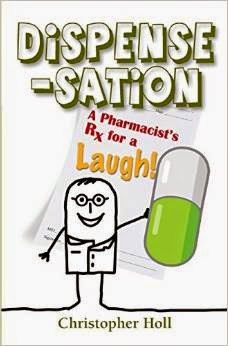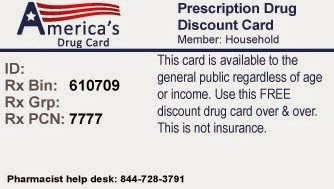Ring, RingIt’s 5 o’clock on a Tuesday morning. Who’s calling.
Ring, RingOh crap, I better get that before it wakes everybody up.
Ring, Ring
I stumble into the kitchen to answer the phone.
Ring, RingEric:
Hello
Voice:
Hey Eric, it’s your sister. You need to get here now.Eric:
What happened?
Sister:
It’s Dad. He’s taken a turn for the worse.
That was not the call that I wanted to receive. Two and a half years earlier my father had been diagnosed with lung cancer…. Stage III-B. Within six weeks of diagnosis he had his left lung removed and had started both radiation and chemotherapy.
I returned to the bedroom to wake-up my wife and tell her what was going on. Within a half-hour we had our son in the car and started driving to my parents’ home, a little over an hour away.
We had been over to visit on Saturday to celebrate his birthday. His actual birthday was the previous Saturday, but we spent that day in the emergency room at the university that was treating his cancer. He had just been released after spending another week there.
Dad was acting like his usual self, only now he had to have oxygen. He could get around without it, but would tire easily so he decided to keep it on. He played on the floor with my two year-old son, just like every other visit. When we left it was the same as always… Dad always bounced back after his visits to the hospital.
Sunday night I had called to check on Dad. Mom said that he
wasn’t bouncing back like normal. I talked with Dad. His voice
wasn’t as strong as it was the day before. I had trouble during that conversation. Several times I had to stop because I was crying. For the first time in my life, I told my dad that I loved him as I hung up the phone.
We arrived at my parent’s house and went inside. Dad was sitting in his recliner, with a wheelchair nearby. On Sunday he had used a walker to get around the house, now he needed the chair to keep from getting winded.
We had previously discussed the idea of hospice and called them to discuss what options we had. We sat down and discussed several options that were available to us. They left in the late afternoon. All we had decided to do was to allow them to monitor and manage Dad’s pain. They were going to bring some morphine down in the morning. Since he could still get around in the wheelchair, we felt pretty good about our decision.
Then Tuesday night happened.
It was a rough night. Dad was gasping for breath throughout the night. My brother and I had to go in several times during the night to move Dad, adjust his oxygen, things like that. We
didn’t get a lot of sleep.
Wednesday morning we lifted Dad into the wheelchair and took him out to his recliner. Over the past twelve hours my father went from being able to wheel himself around the house to being unable to get himself out of bed. We made the call to hospice for the additional help.
The hospice nurse arrived a little after eight. She gave my dad a dose of morphine and his breathing settled. He was able to talk with us, albeit in hushed tones. The nurse called to have a hospital bed delivered so we
wouldn’t have to mess around trying to get Dad in and out of the bed in his bedroom.
The morphine was keeping Dad’s airway open and pain controlled, but he was getting a little agitated just laying in his recliner. The nurse thought that it might be a good idea to get a little
Ativan on board to take the edge off. So we decided to go that route.
But there was nobody to deliver the medication. All of the hospice workers were out taking care of patients. The driver who was delivering the hospital bed was coming from a different part of the county so he
couldn’t pick up the
Ativan.
Since everything appeared to be under control, I took off to pick up the medication at the pharmacy 15 miles away. My wife left to go back to our house to get fresh clothes for us, along with our toiletries.
My trip took longer than it should have. The order for the
Ativan was late getting to the pharmacy. I had worked at that pharmacy as an
extern, so they took care of me as quick as they could. While there, a phone call came to the pharmacy… I had to run to the hospice office to pick up some other stuff for my dad. Of course that
didn’t go as planned. I spent an extra half-hour waiting for this, that, and the other.
When I finally was able to return to my parent’s house, Dad was still agitated. The nurse showed us how to administer the
Ativan Intensol and Dad calmed down instantly. She felt that we had the situation under control, so she left to check on another local patient.
Things went fine over the next couple of hours. Dad
wasn’t able to talk to us, but we were still able to communicate. I don’t know if that makes a lot of sense but that’s how it was.
My wife returned from her trip and brought me some new clothes. I explained to her what was going on and then decided to escape upstairs to take a bath. Dad was resting peacefully and everything appeared to be under control.
My parents house was over a hundred years old. It would take a little while for the water upstairs to get warm. I checked out my facial hair in the mirror and decided that I would attack it with an electric razor after I had cleaned up.
There was about two inches of water in the bottom of the bathtub when I stepped in. Just having the water touch my feet and remove the grime felt good. As I was lowering the rest of my body into the water I heard a voice call up the stairs.
It was my brother.
Dad's breathing had changed. In the ten minutes since I had left his side, my father had taken a turn for the worse.
I hurried and put on my clothes to return to my father's side.
When I entered the family
room, my mom was sitting at my dad's right shoulder, caressing his head. My brother was at the same position on his left shoulder.
My sister was at my dad's right hip, with her husband sitting next to her. My wife was at dad's left hip.
I sat down next to my brother and put my arm on his shoulder. He and my dad shared a birthday and the past two weeks had been especially hard on him. My brother had just turned twenty.
Over the next 90 minutes, our family sat by my father wondering if each breath would be his last. The gaps between breaths grew.
Ten seconds.......
fifteen seconds.......
Finally, my dad drew his last breath.
The last twelve years have passed quickly, yet it seems like an eternity since my father died.
I can't put into words the impact my father had on my life. He taught me to be the man that I am today, and for that I am truly grateful.
I only had my father on this earth for 26 years. My dad was a Christian, so I know that I'll see him again on the other side of eternity. It hurts to not have him around to see my kids grow up, but I am comforted in knowing that he is eternally pain-free.
Twelve years ago today, my father died.
I miss you, Mike.
And I love you.






